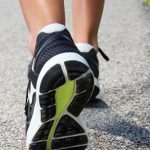
In the largest investigation of its kind, researchers conclude that subjecting prostate cancer patients to radiation therapy immediately after surgery doesn’t give them an advantage in staying cancer-free. The finding stems from a review of four studies that together tracked outcomes for more than 3,500 prostate cancer patients from multiple countries. If the findings help change standard practice, “the good news is that, in future, many men will avoid the side effects of radiotherapy,” said study first author Chris Parker, of the Institute of Cancer Research in London. His team was to present its findings Friday at the European Society for Medical Oncology annual meeting, in Barcelona. Parker stressed that radiation side effects can be troublesome. They “include urinary leakage and narrowing of the urethra, which can make urination difficult,” he said in a meeting news release. “Both are potential complications after surgery alone, but the risk is increased if radiotherapy is used as well.” Curbing cancer’s spread One prostate cancer specialist explained why doctors have often ordered radiation for patients who’ve undergone prostate removal (prostatectomy). “Many men that undergo radical surgery for prostate cancer may have a spread of the disease beyond the capsule of the prostate, or invasion [of the tumor] into the seminal vesicles or lymph nodes,” said Dr. Louis Potters, deputy physician-in-chief at Northwell Health Cancer Institute, in Lake Success, N.Y.… read on >
















